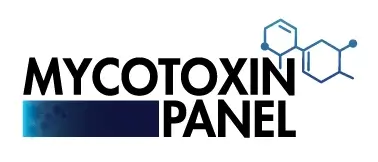How Mycotoxin testing Services Can Protect Your Products
How Mycotoxin testing Services Can Protect Your Products
Blog Article
The Need of Mycotoxin Examining in Agricultural Products to Make Certain Customer Security
The requirement of mycotoxin testing in agricultural items is an essential aspect of public wellness and safety and security that calls for complete exam. Mycotoxins, hazardous compounds produced by certain fungis, can penetrate numerous plants, bring about substantial health risks for consumers, such as cancer causing results and organ damages. Regular mycotoxin screening not just gets rid of and determines polluted products from the supply chain however likewise guarantees compliance with security criteria and boosts customer trust fund. Understanding the techniques and benefits of such screening is important to fully value its importance in guarding our food supply.
Recognizing Mycotoxins
Mycotoxins, toxic secondary metabolites created by specific fungis, offer a significant risk to agricultural products and human health and wellness. These substances are created by various types of molds, such as Aspergillus, Fusarium, and Penicillium, which can infect plants both pre- and post-harvest - Mycotoxin testing Services. One of the most common mycotoxins include aflatoxins, ochratoxin A, fumonisins, zearalenone, and deoxynivalenol (DON)
Mycotoxin contamination can occur under particular environmental conditions, such as high moisture and temperature level, which favor the growth of mold. Agricultural items like grains, nuts, seasonings, dried out fruits, and coffee are especially at risk. The visibility of mycotoxins in these assets can bring about substantial economic losses as a result of reduced crop yields and the requirement for strenuous screening and decontamination processes.
Comprehending the biochemical nature and formation of mycotoxins is crucial for creating effective mitigation techniques. Research study has actually revealed that mycotoxins show an array of chemical frameworks and properties, making discovery and removal challenging. Advanced logical strategies, consisting of chromatography and mass spectrometry, are made use of to determine and measure mycotoxins in agricultural products, ensuring that contamination levels continue to be within risk-free limits developed by regulatory bodies.
Wellness Risks of Mycotoxins
Provided the considerable dangers associated with mycotoxins in agricultural items, comprehending their effect on health is critical. Mycotoxins, toxic second metabolites generated by fungi, pose serious hazards to both human and animal health and wellness.
Intense mycotoxin poisoning, although less usual, can cause instant and serious illness such as liver damage, intestinal disruptions, and hemorrhaging. Ochratoxin A, another potent mycotoxin, is connected to kidney damages and has prospective carcinogenic results. On the other hand, fumonisins, primarily impacting maize, are related to esophageal cancer cells and neural tube flaws.

Usual Resources of Contamination
Understanding the typical sources of contamination is crucial for efficiently handling and alleviating the threats postured by mycotoxins. Mycotoxins are toxic secondary metabolites produced by certain sorts of fungi, which can pollute farming items at numerous phases of manufacturing, storage space, and handling. The main resources of contamination consist of area conditions, post-harvest handling, and storage settings.
Area conditions play a substantial function, with elements like climate, plant susceptibility, and dirt wellness influencing fungal development. Plants such as corn, peanuts, wheat, and tree nuts are particularly susceptible to mycotoxin-producing fungis like Aspergillus, Fusarium, and Penicillium types. Insufficient crop rotation and poor pest administration can worsen the danger of contamination.
Post-harvest handling is one more critical point where contamination can occur. Mechanical damages throughout harvesting and transportation creates access factors for fungi, while inappropriate drying out methods can leave moisture degrees high sufficient to support fungal growth.
Storage space environments add significantly to contamination risks. Poorly kept storage space facilities with high humidity and temperature level degrees create optimal conditions for mycotoxin production. Regular evaluations and proper storage problems are essential in suppressing this hazard.
Mycotoxin Checking Techniques
Reliable management of mycotoxin contamination pivots not only on identifying possible sources but additionally on implementing durable testing approaches to identify these check it out dangerous compounds. Mycotoxin screening techniques can be generally categorized right into immunochemical and chromatographic methods. High-performance liquid chromatography (HPLC) and gas chromatography-mass spectrometry (GC-MS) stand for sophisticated chromatographic techniques recognized for their high level of sensitivity and precision. These strategies are experienced at measuring multiple mycotoxins in intricate matrices, making them vital for extensive evaluation.
On the other hand, enzyme-linked immunosorbent assay (ELISA) and side circulation assays are prominent immunochemical approaches. ELISA, particularly, is extensively made use of as a result of its cost-effectiveness, ease of use, and rapid turnaround time. Lateral flow assays offer quick, on-site testing capabilities, making them appropriate for field applications where instant choices are necessary.
Furthermore, innovations in molecular biology have introduced PCR-based techniques with the ability of spotting mycotoxin-producing fungi at hereditary levels, using a predictive technique to contamination threat. Integrating these varied approaches enhances the integrity and comprehensiveness of mycotoxin detection, ensuring that agricultural products fulfill safety requirements and safeguarding consumers from possible health dangers.
Benefits of Normal Evaluating

Regular mycotoxin testing uses significant advantages that dramatically reinforce farming safety and security and quality. Mycotoxins, harmful substances created by specific fungi, can contaminate food and position major health and wellness threats, consisting of cancer cells and browse around this web-site acute poisoning.
Furthermore, constant testing assists in preserving the stability and reputation of agricultural producers. By rigorously regulating and monitoring mycotoxin degrees, manufacturers can avoid costly recalls and legal consequences. This not only guarantees compliance with strict international safety standards but also fosters customer trust fund and commitment.

Final Thought
The requirement of mycotoxin testing in agricultural items is emphasized by the considerable health and wellness risks posed by these poisonous substances. It improves the credibility of producers and fosters trust fund within the farming supply chain, inevitably securing public health and wellness.
The necessity of mycotoxin screening in agricultural items is an essential facet of public health and wellness and safety that requires complete exam. Mycotoxins, hazardous top article substances created by specific fungis, can penetrate different crops, leading to significant wellness threats for customers, such as cancer causing impacts and organ damages.Mycotoxins, toxic second metabolites created by certain fungis, present a significant threat to agricultural items and human health.Provided the significant dangers associated with mycotoxins in agricultural items, comprehending their influence on health and wellness is critical (Mycotoxin testing Services).The need of mycotoxin testing in farming items is highlighted by the substantial health and wellness threats presented by these toxic compounds
Report this page